#087 How to make traditional oats
No, "overnight oats" don't count (you need to throw the liquid away)
We’re human beings. We can eat every food group. We’re not carnivores. We’re not vegans. We’re omnivores. As much as I love a fatty ribeye, we cannot deny that there is much to gain from plants. They’re incredibly restorative, and are a great option for a meal — if you do it the right way. Plant foods have been unfairly demonized and it’s largely because people aren't preparing them properly. Everyone wants things instantly these days — which is why we've seen the rise of "instant" and "overnight" oats, that very wrongly claim we can enjoy plant foods like oats with little to no prep. But why did we normalize this? We simple forgot the way our ancestors did things. They prepared grains like oats with so much care.
If you want a more detailed recipe, this is one really great one from PANACEAS PANTRY that I highly recommend. It also looks stunning. You can click on the link to read her blog post, but I’ll just do a quick summary of the recipe here for your convenience.

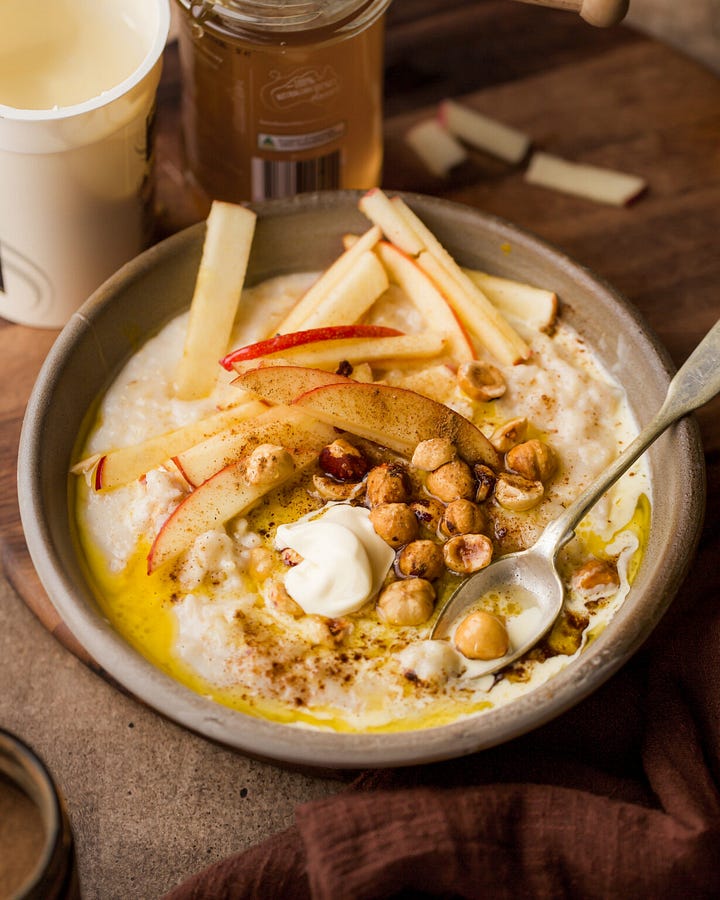
Ingredients
Clean mason jar
3 cups rolled oats
3 1/2 cups filtered water
Optional- 1 tbsp fresh rye, wheat or buckwheat (if gluten free) flour
Live culture starter (raw coconut water kefir, raw yogurt, raw milk kefir, sourdough starter)
Salt
Milk or water
1 tbsp butter or cream
Yogurt
Raw honey
Method
Add oats to a clean mason jar (glass or ceramic with an airtight lid)
Fill with water or milk and make sure oats are submerged
Place jar in a warm place out of direct sunlight for 1-5 days (Note- there is NO right amount of time to ferment. The speed to which your oats will ferment will depend on how active your starter was AND the temperature. In summer months 24hrs might be enough, in the middle of winter it can take up to a week. Trust your nose! If your oats ever smell foul or you see any mold, you should discard them)
Once fermented, transfer mix to the refrigerator
Add 1/2 cup of the fermented oat mixture to a small cooking pot with 1/2 cup of water or milk, and a pinch of salt (Adjust ratios as needed — if you’re after a larger meal then 1 cups fermented oats to 1 cup milk/water)
Bring to a gentle simmer, and cook for 10 minutes on low heat (traditionally oats would be stirred or beaten the whole time — this makes for THE creamiest oats and is recommend)
Pour hot, creamy oats into a bowl and top with your choice of butter or cream, yoghurt and a drizzle of honey. Add any extra delights you like!
THIS is how you enjoy a bowl of nourishing oat meal that’s incredibly healthy. This recipe gives you a good base for fermented oats that is very gut-friendly, and you can experiment with different flavors using this base. Here are some potential ideas:
Sliced strawberries, blueberries and raw honey
Sliced bananas, cacao nibs and maple syrup
Chunks of mango, pineapple and toasted coconut flakes
Ceylon cinnamon and cacao nibs
What else would you add?
Once again, for the full recipe check out PANACEAS PANTRY.
Make milk great again
We should never forget just how nutritious and vital milk is to our diet. We used to have these ads back when we were growing up. Milk was for everyone. The young. The old. Those who were working hard. As much as it tries, oat milk will never be as nourishing for us as real milk.
This is the WARKITCHEN ideology
Who needs a food pyramid when you have one infographic for it all? I’m sure most people would experience a better quality of life if they started eating REAL food. But you must forgive us… we missed milk!
The burger is peak Americana
The biggest crime of fast food companies is that they bastardized the burger. They turned one of the greatest culinary inventions into the image of a heart attack. When you look at it closely? The burger is peak Americana. Here's how you make the best burger ever.
What’s the best cooking fat?
There is a cooking fat for every occasion. Here's how I use them:
Butter: Eggs, basting steaks, compound butter, as a spread with sourdough
Olive oil: General all purpose cooking, as a finisher, sautéing vegetables, salad dressings
Duck fat: Roasting potatoes, making the best French fries
Ghee: Searing steaks, increasing the flavor of white basmati rice Coconut oil: Searing steaks, sautéing vegetables, shallow & deep frying
Tallow: Searing steaks, general all purpose cooking, roasting
Avocado oil: Making real mayonnaise, all purpose cooking, salad dressings
There is no "right or wrong". It all comes down to your personal preferences. The type of fat you use imparts a unique taste in the dishes you're making. Think about how each one comes together to form the flavor profile of the bite.
We must thank the bees
Most people don't know this but the PURITY of a honey is derived from the specific environment bees are in, and this is so incredibly hard to control. With cattle all you have to do is not torture them, house them properly and feed them grass all their lives. But with bees? It's insane. These guys can forage within a 2-3 mile radius. This means ANYTHING within this range will affect the quality of honey and other products bees make. And they only make less than a teaspoon of honey! Don't be rude... drop a 🐝 to say thank you (rip to a real one 🫡).
154 pages of our best content ever
❋ HOW TO MAKE SPICY ITALIAN MOSTARDA

You may think this is a recipe for Italian mustard due to its name, but, although Italian mostarda does contain mustard, it's only distantly related to the yellow stuff in the squeeze bottle. Instead, it's fruit preserved in syrup that gains quite a kick from a healthy jolt of powdered mustard seed or mustard oil. As such, it's one of the standard condiments served with boiled meats in Northern Italy. Today, it's also often served as an accompaniment to cheeses or charcuterie.
The best-known mostarda in Italy is Mostarda di Cremona, which is made with a mixture of peeled, cored fruit: apricots, peaches, kiwis (a recent addition), Bartlett pears, small apples, tangerines, cherries, quinces, figs, and so on.
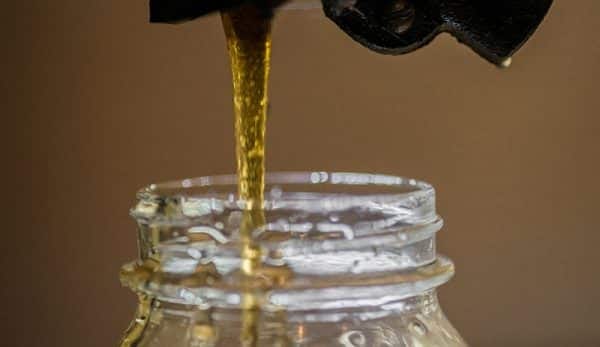

Thanks to the national attention given to pollinator health, more and more hobby farmers are discovering the joys of raising bees and harvesting their own honey. If that describes you—and if your bees have been busy—you’ll be wanting to know how to get that rich golden amber out of the comb and into your containers. Here are the three main methods you can use:
Comb Honey
Crush and Strain
Extractor
❋ STEP BACK IN TIME AT THIS PERFECTLY CHIC SAINT-TROPEZ HOTEL
This summer [2018], the hotel relaunches as Épi 1959 after a major refurbishment. Italian interior decorator Monica Damonte has been in charge of the design, while Madison Cox has developed the new landscaping and gardens. The American garden designer also worked on the Majorelle Garden in Marrakech (he is the widower of Pierre Bergé, Yves Saint Laurent’s former partner).
The renovation maintains the ten original cabins. Decor has been kept light and wonderfully lax; think wicker furniture, creamy pastel shades, and some floral froufrou. “There was no design concept. Just simple, understated cabins refreshed for a true Saint-Tropez experience on the beach,” explains Sitterle. The team referred to original photography and vintage furniture from the 1950s and '60s as inspiration.
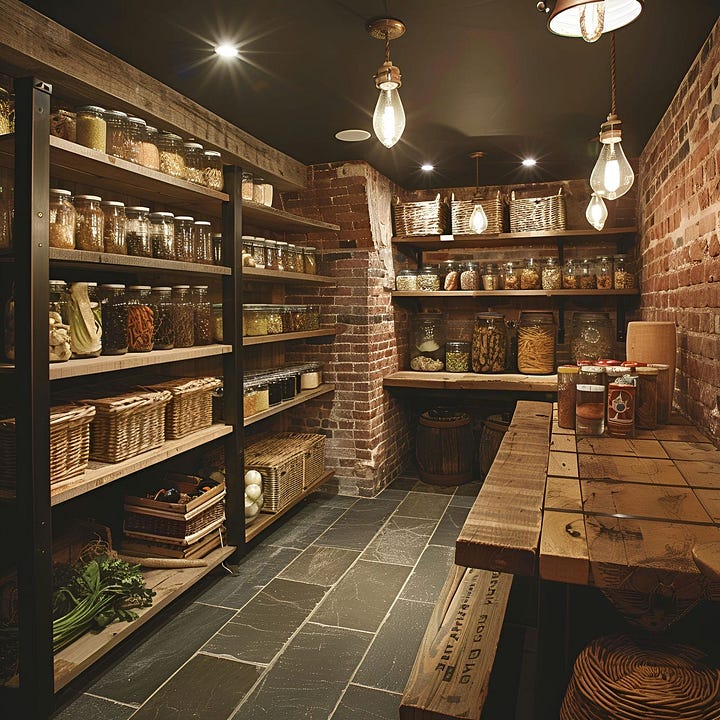
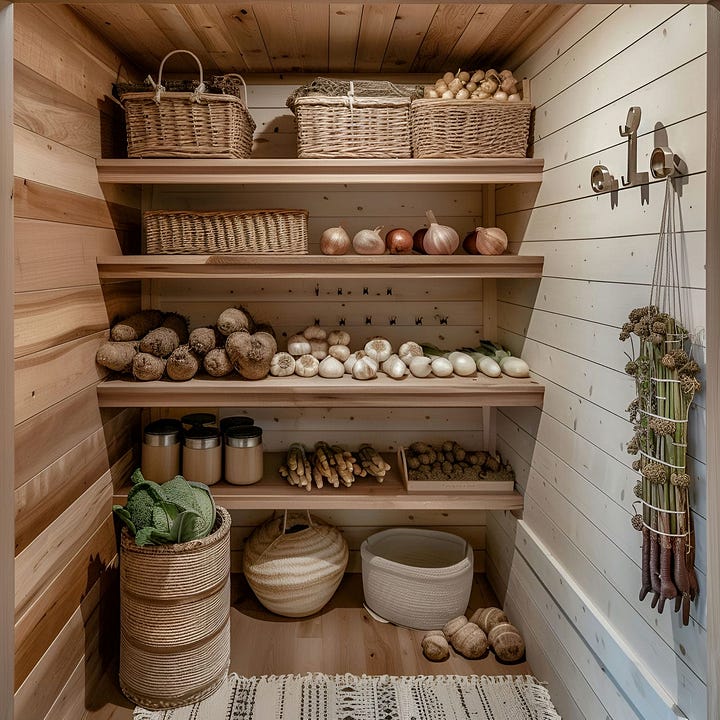
A root cellar is a structure that stores food naturally and sustainably. It uses the cool and moist conditions of the underground to keep vegetables, fruits, nuts, and other foods fresh for weeks or months. A root cellar can be built underground, partially underground, or above ground, depending on the available space and resources. The size of a root cellar depends on the amount and variety of food one wants to store.
The rectangular or square shape facilitates proper airflow within the root cellar. It allows for installing ventilation systems or vents at strategic locations, ensuring adequate air circulation. This ventilation helps regulate temperature and humidity levels, contributing to the preservation and freshness of the stored produce.
❋ Read our latest WARKITCHEN magazines:
❋ Get your copy of Optimal Fuel: Your Nutrition Playbook here. It's a cookbook and nutrition guide — all in one. All proceeds goes towards an outrageous amount of hearty ribeyes and raw honey!
❋ If you’d like to contribute an article or sponsor a future issue, please send us your pitch to rocky@warkitchen.net
❋ We release a digital magazine issue on the first Sunday of every month. Explore the full magazine archive here.
❋ Adding us (rocky@warkitchen.net) to your contacts, or moving us to primary will make sure you continue receiving these emails. Connect with us on all our socials.
Thank you for joining us on this beautiful Sunday ladies & gents 🥂







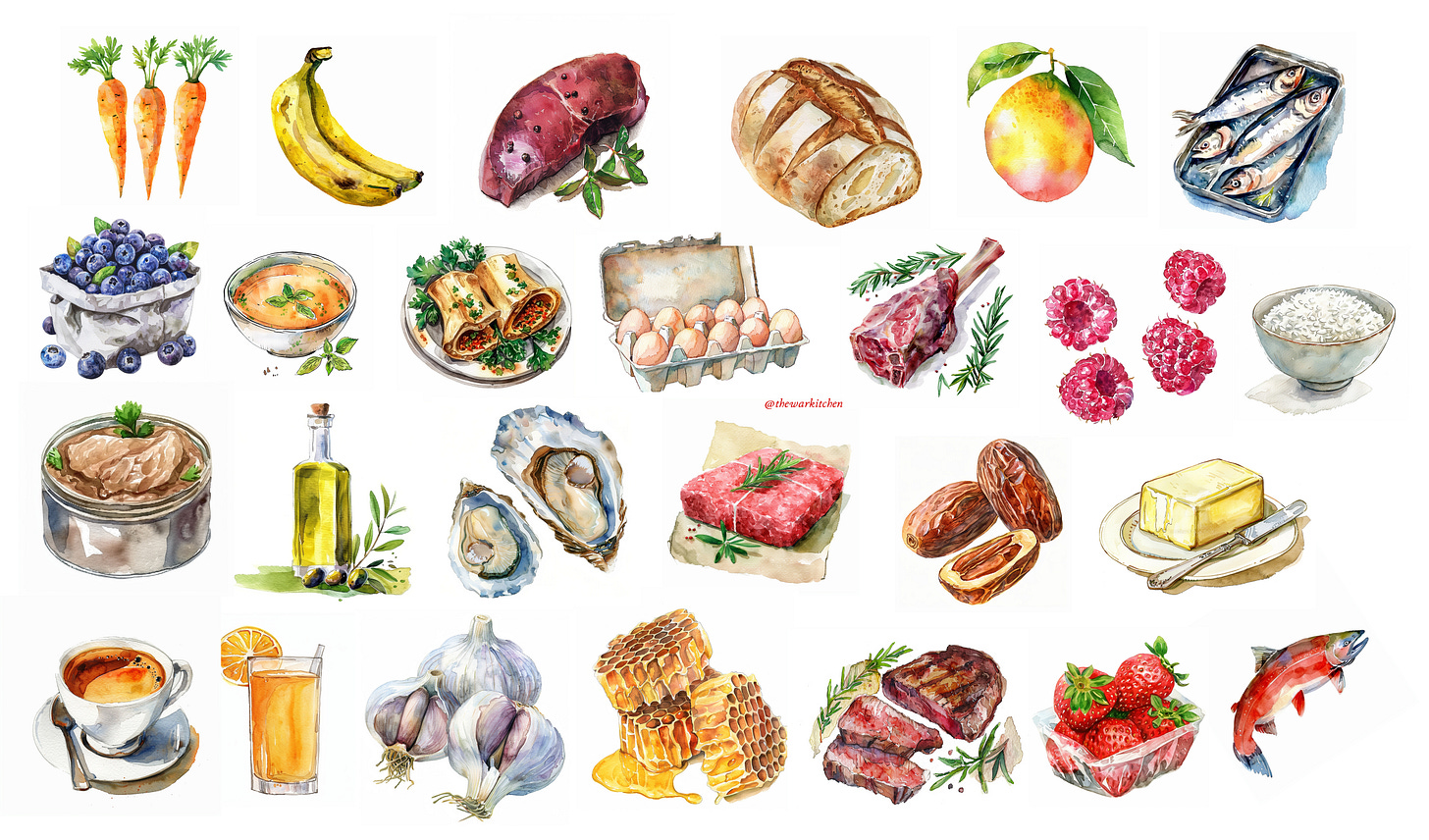

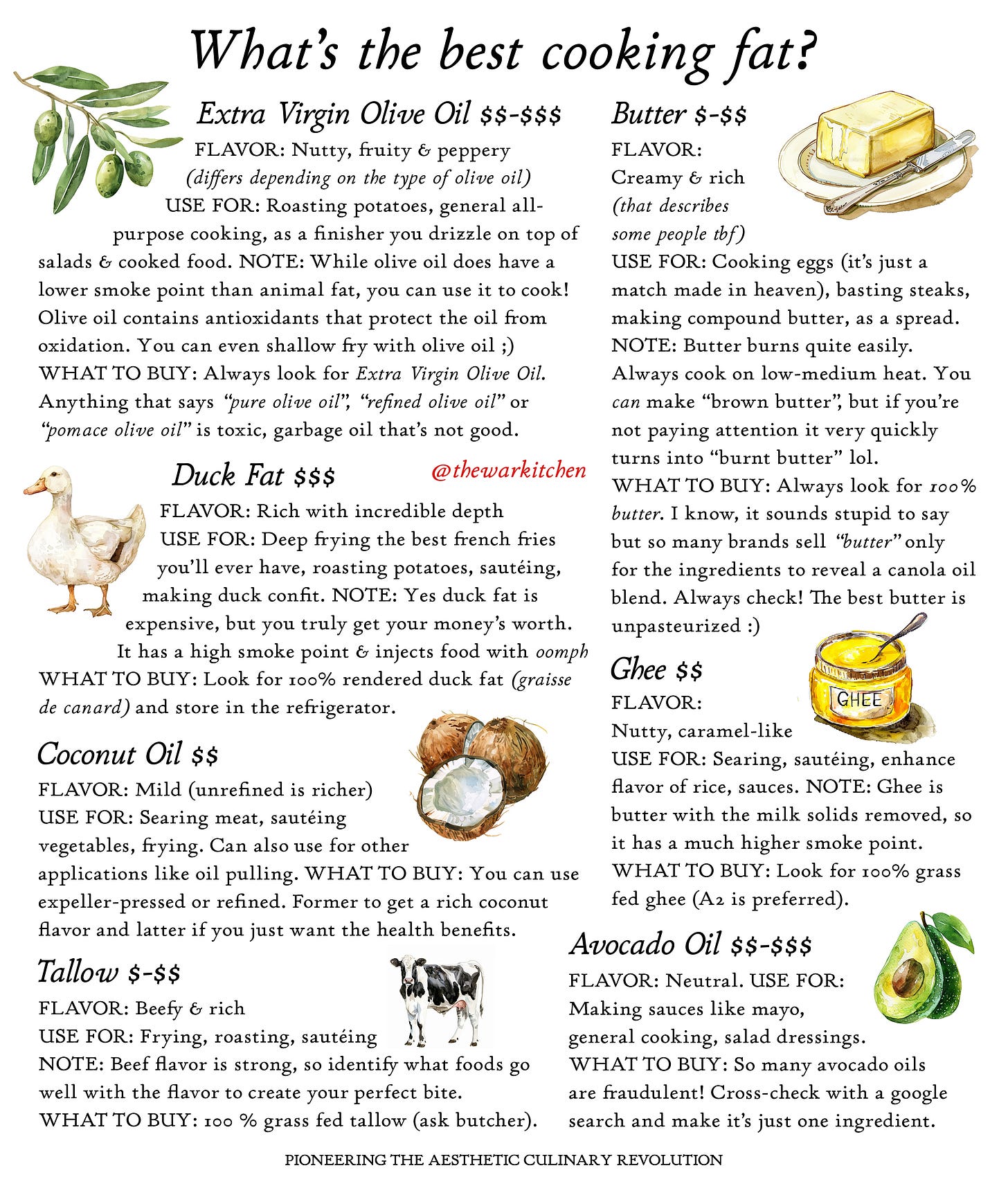
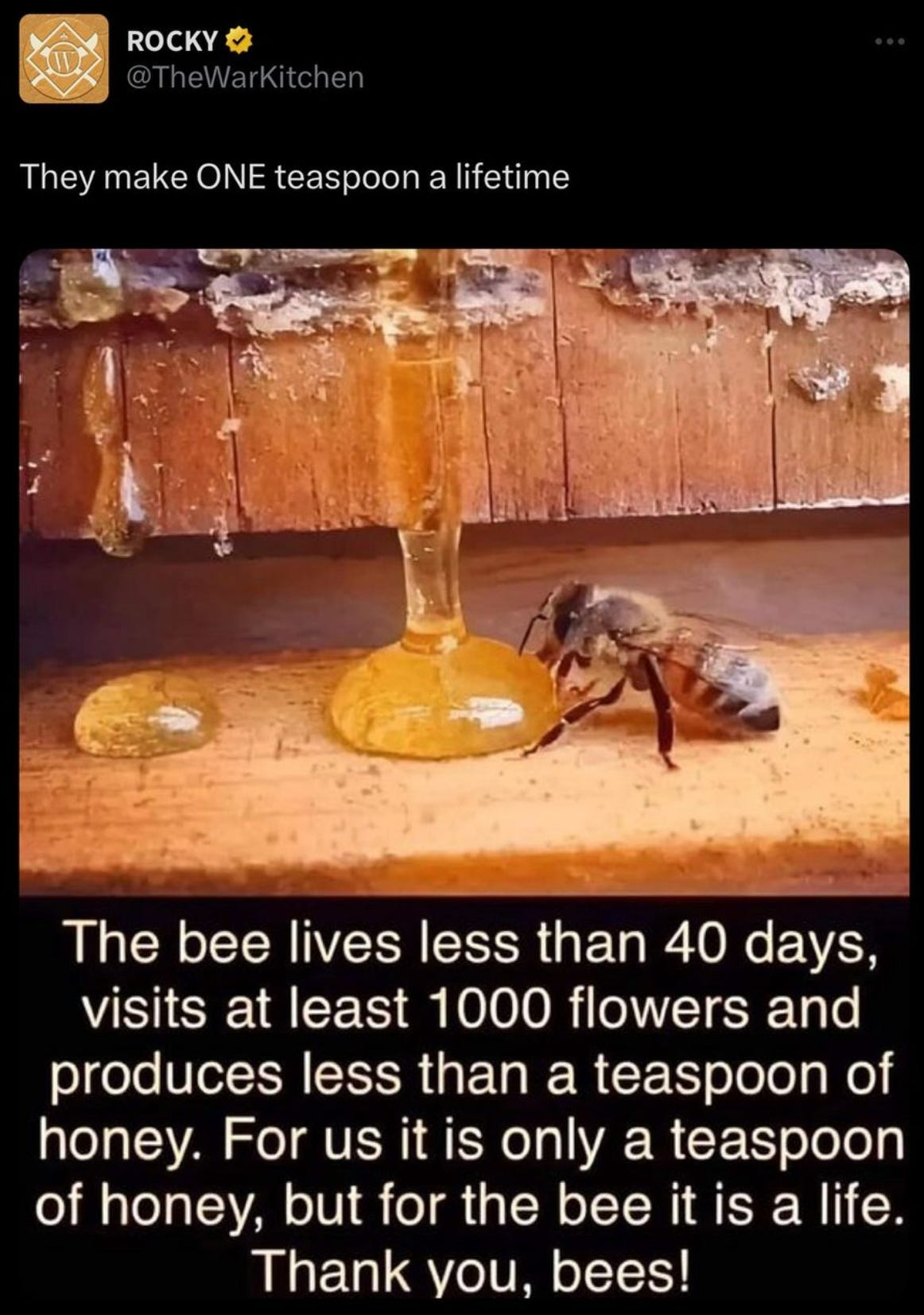








The amount of detail that goes into these works are insane.
This has to be the best nutrition page I’ve ever come across.
Well done and please keep it up.
little typo on the formatting: Ghee: Searing steaks, increasing the flavor of white basmati rice Coconut oil: Searing steaks, sautéing vegetables, shallow & deep frying